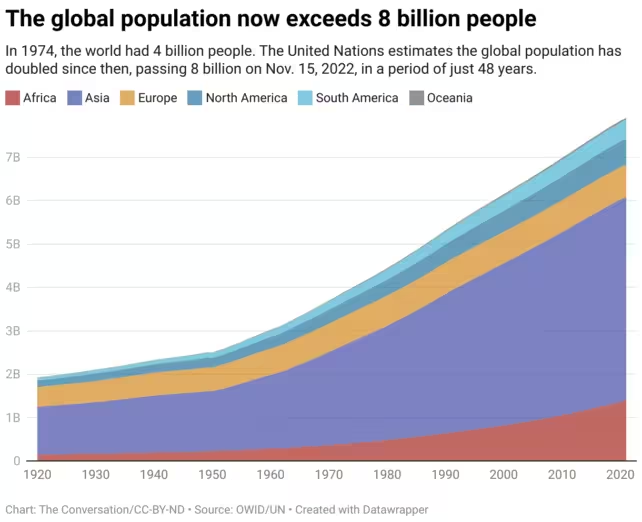5 Minutes
Exploring the Future of Humanity Without New Births
Imagine a world where the last baby has been born. As lifespans rarely extend beyond 100 years, humanity would face an inexorable countdown to extinction. Although the population's initial decline might seem gradual, its consequences would reshape every aspect of society and civilization.
Population Dynamics: A Gradual Collapse
When no new children are born, population decrease starts slowly—driven by the natural aging and passing of current generations. However, with each year, the absence of youth becomes increasingly evident. As young adults dwindle, their roles in essential sectors such as agriculture, healthcare, and infrastructure go unfilled. Societies around the world would confront shortages in critical services and a breakdown of economic systems.
Essential Services Under Threat
Even with fewer mouths to feed, disruptions in production and distribution would quickly lead to scarcity. Without enough people in their prime working years, farms may go untended, supply chains could falter, and medical facilities would face staff shortages. Over time, this would result in widespread lack of food, clean water, medication, and other necessities vital for survival.
According to experts in human evolution, anthropology, and sociology, civilization would not gradually fade away but unravel rapidly as systems failed under the pressure of demographic imbalance.
Possible Causes for a Sudden Stop in Human Births
Though abrupt cessation of births is highly improbable under current trends, several hypothetical scenarios could trigger such an event. Science fiction has often explored these possibilities:
- Pandemic-Induced Infertility: As imagined in Kurt Vonnegut's novel "Galapagos," a global epidemic could render all people of reproductive age infertile, erasing humanity's capacity to continue.
- Nuclear Catastrophe: Complete destruction from nuclear war, a frequent theme in speculative fiction, would eliminate both population and prospects for new life.
Other dystopian works, such as Margaret Atwood’s The Handmaid’s Tale and P.D. James’s The Children of Men, forecast futures shaped by reproductive crises, government control, and escalating social chaos. These stories underscore the profound consequences of lost fertility, encompassing despair, restrictions on personal freedoms, and the collapse of societal norms.

Current Demographic Trends and Declining Birth Rates
While humanity is not facing immediate extinction, demographers note significant shifts in global population patterns. As of the 2020s, Earth’s population surpassed 8 billion, and forecasts suggest a potential peak around 10 billion people by the 2080s. However, fertility rates are decreasing in numerous countries—sometimes dramatically.
Case Studies: Fertility Decline in Diverse Regions
Many nations, including India and South Korea, are experiencing historic lows in birth rates. In the United States, for example, 3.6 million births were recorded in 2024, down from 4.1 million two decades ago. Simultaneously, annual deaths have increased, further narrowing the gap between the number of people being born and dying.
This demographic shift introduces the risk of population aging, with fewer young people to support older generations. Societal structures such as the labor force, pensions, and intergenerational care become increasingly stressed as the balance tips. The youth, traditionally innovators and primary drivers of economic growth, may decline to levels insufficient for maintaining economic productivity and social stability.
Migration offers one potential solution to declining populations, but political and cultural reservations often limit its effectiveness. Additionally, male infertility is on the rise, further contributing to this demographic challenge.
Lessons From Evolutionary History: The Fate of Neanderthals
Human extinction is not without precedent among our evolutionary relatives. Neanderthals, close cousins of Homo sapiens, emerged over 400,000 years ago but vanished roughly 40,000 years ago. Scientific research suggests that modern humans outperformed Neanderthals in resource management and reproductive success, gradually leading to the Neanderthals’ extinction.
Should Homo sapiens face a population collapse, Earth’s ecological landscape would transform, with other species potentially thriving in humanity's absence. However, the disappearance of humans would also erase millennia of cultural, scientific, and technological achievements.
Ensuring the Longevity of Human Civilization
The path to a sustainable human future requires proactive intervention. Population trends demonstrate both the vulnerability and resilience of our species. To avoid a scenario where humanity vanishes within a century of the last birth, several strategies must be prioritized:
- Mitigating Climate Change: Addressing environmental threats and promoting planetary health are essential for long-term survival.
- Preventing Conflict: Reducing warfare and political instability will help maintain the structures necessary for civilization to thrive.
- Supporting Biodiversity: Maintaining healthy ecosystems, rich with diverse animal and plant life, is crucial for human well-being and planetary balance.
Prominent scientists and organizations, such as the United Nations Population Division and leading demographers, highlight these measures as critical for managing future demographic transitions.
The Role of Science and Technology in the Population Debate
Scientific advancements in fertility technology, healthcare, and sustainable development could play a key role in shaping the future. Innovations related to assisted reproduction, genetic research, and age-related healthcare are already influencing demographic patterns.
Population scientists continue to track factors like fertility rates, health outcomes, and environmental limitations. Integrating space exploration and planetary stewardship into broader policy discussions may also offer new perspectives for sustainable coexistence, whether on Earth or beyond.
Conclusion
Whether imagining science fiction scenarios or examining real demographic trends, the prospect of a future without new human births invites both scientific curiosity and sobering reflection. History shows that species extinction is possible—but not inevitable. By understanding the dynamics that drive population change and making informed policy and scientific choices, humanity can work to secure a future where future generations continue to explore, create, and endure.
Source: theconversation



Comments